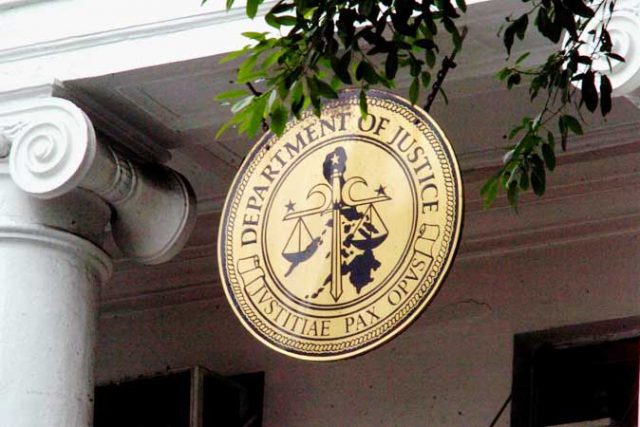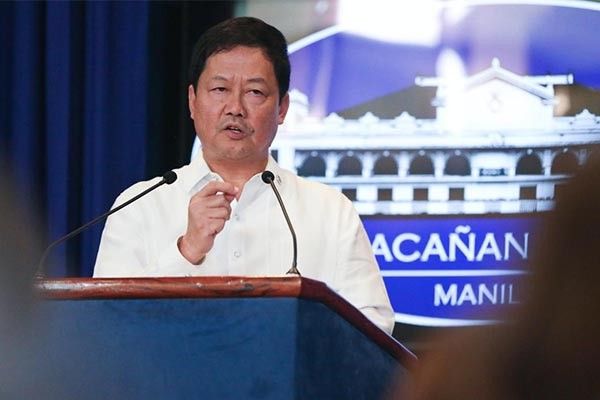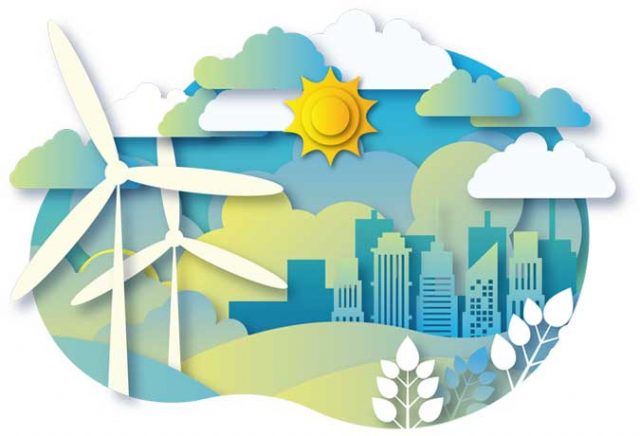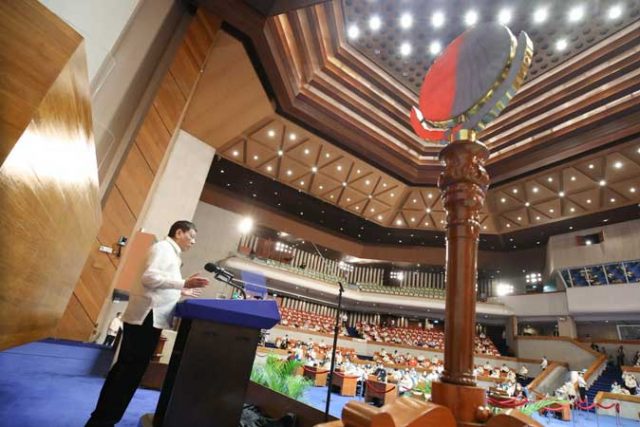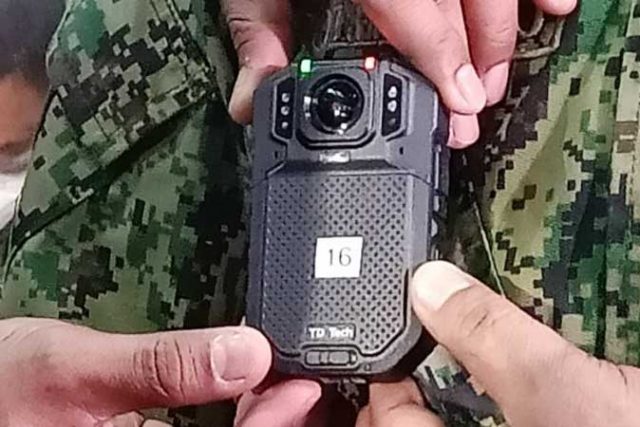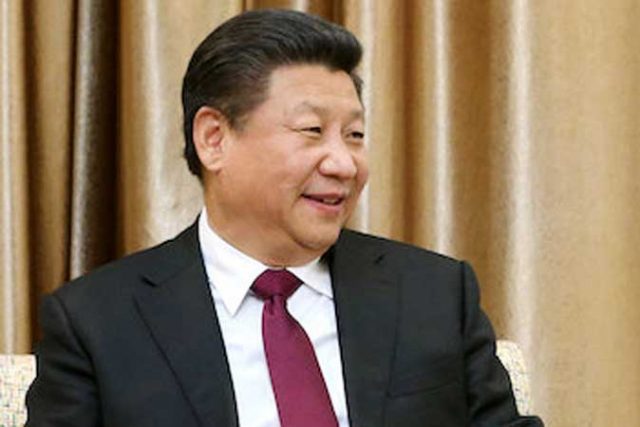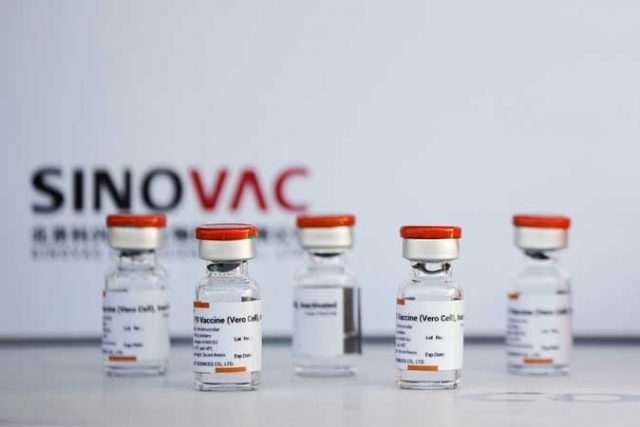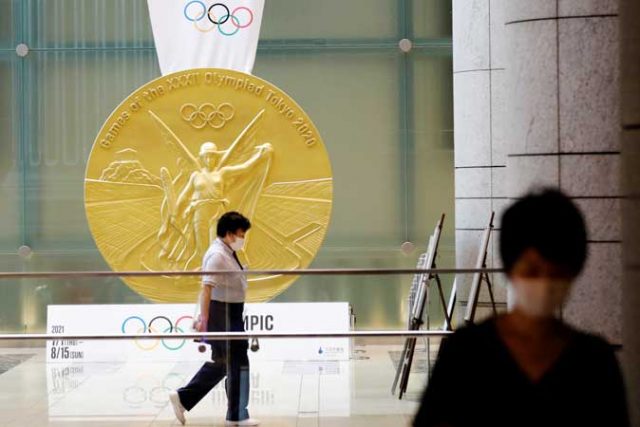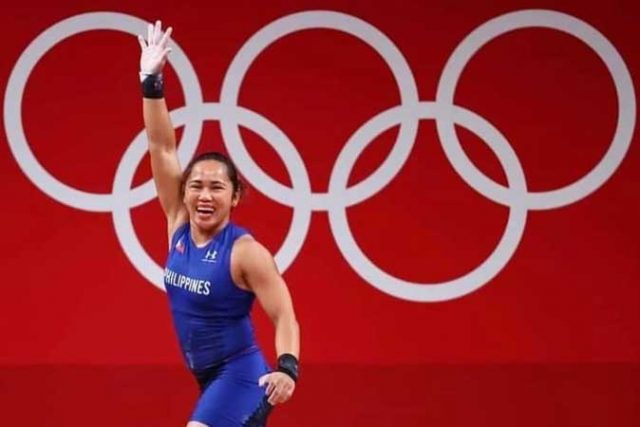Weightlifter Hidilyn Diaz makes history as first Filipino Olympic gold medalist
THE Philippines is no longer gold medal-less in the Olympic Games, thanks to weightlifter Hidilyn Diaz.
Four-time Olympian Diaz, 30, finally secured that elusive gold for the country by topping the women’s 55kg category at the Olympics on Monday night at the Tokyo International Forum.
It ended nearly a century of searching for gold in the Olympics for the Philippines while completing for Ms. Diaz a mission to improve on her silver medal performance in the Rio Games in 2016.
Ms. Diaz scored a total of 224 kilograms to edge China’s Liao Qiuyun, who had a total of 223.
She lifted 97 kgs in the snatch and completed her gold conquest by lifting 127 kgs — an Olympic record — in the clean and jerk in her third and final attempt.
Kazakhstan’s Zulfiya Chinshanlo won the bronze with a total of 213.
The Filipino bet went back and forth with Ms. Liao in the clean and jerk on her way to the gold.
The Chinese, who also lifted 97 kgs in the snatch, put the pressure on Ms. Diaz on her final attempt after seizing the lead by lifting what was then an Olympic record of 126 kgs to take her total to 223.
That left Zamboanga City native Diaz with no choice but to go for 127 kgs in her last attempt in the clean and jerk to go up one over Ms. Liao. Had she ended up tied with the Chinese, the latter would have won as she is three kilos lighter than Ms. Diaz.
With all confidence, Ms. Diaz completed the task of lifting the needed weight to set a new Olympic record and, more importantly, win the gold medal.
Making the feat more impressive was that in a virtual press conference for Philippine media on Tuesday from Tokyo, Ms. Diaz said while she had attempted to lift 127 in training, it was something that continuously frustrated her, unable to complete it.
But when the need came up for her to deliver, she rose to the challenge and was very proud of her effort.
NOT EASY
The road to Tokyo was also not easy, Ms. Diaz shared, made tougher by the pandemic.
“There were a lot of challenges. I had to deal with self-doubt, and there were people who were doubting me if I could win gold. But I’m thankful for the people behind me, especially the ‘HD Team,’ who stuck with me and really prepared me for this Olympics,” said Ms. Diaz, who was joined in the press conferences by her coaches Kaiwen Gao and Julius Naranjo, sports nutritionist Jeaneth Aro and sports psychologist Dr. Karen Trinidad.
“During the pandemic, we really had to work harder with all the restrictions,” added Ms. Diaz, whose team trained in Malaysia for the past year.
Also present during the press conference were Philippine Chef de Mission Mariano V. Araneta and Philippine Olympic Committee President Abraham N. Tolentino.
For winning the gold, Ms. Diaz is set for a huge windfall.
At the onset, she is set to receive P33 million in cash incentives, a house and lot in Tagaytay care of Mr. Tolentino, and a condo unit. The cash is broken down as P10 million each from the government, under Republic Act 10699, or the “National Athletes and Coaches Benefits and Incentives Act; Manny V. Pangilinan’s MVP Sports Foundation, and San Miguel’s Ramon S. Ang. Businessman and lawmaker Mikee Romero pledged P3 million.
The condo unit, located at Eastwood City, will be given by Megaworld and is worth P14 million.
Mr. Tolentino said incentives could add up as he feels more groups or individuals are inclined to show their appreciation for what Ms. Diaz has done and the rest of the Philippine team.
In winning the gold, Ms. Diaz expressed hope that what she has achieved would provide inspiration for the Filipinos to continue moving forward despite the challenges present at the moment.
“It was not easy winning gold just like what everybody is facing now with the pandemic. But we’re survivors and we find ways. And we just have to keep fighting until we reach our goal.”
Ms. Diaz will be back in the country on Wednesday.
RESOLUTIONS FILED
Meanwhile, following the victory of Ms. Diaz, separate resolutions were filed both at the Senate and House of Representatives, honoring her and other outstanding Filipinos.
Senators Juan Miguel Zubiri, Juan Edgardo Angara and Francis N. Tolentino authored a resolution which seeks to establish a Philippine Senate Medal of Honor which recognizes the extraordinary efforts and contributions of outstanding individuals or institutions in various fields of expertise such as sports, military and defense, law enforcement, science and technology, education, humanitarian, and public service.
They hope that by doing so, those to be recognized will serve as inspiration for Filipinos.
At the House, Zamboanga Rep. Mannix Dalipe filed a resolution to commend and congratulate Ms. Diaz for her gold medal win. Aside from this, Rizal Rep. Fidel Nograle also called for Congress to give a Congressional Medal of Achievement to the country’s first-ever Olympic gold medal winner. — Michael Angelo S. Murillo

